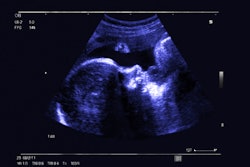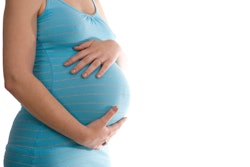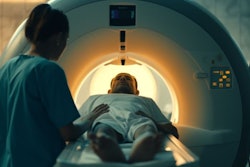A radiologist and a sonographer failed to diagnose critical conditions during two pregnancies, including a twin baby who died three days after birth, according to a report by the office of New Zealand's Health and Disability Commissioner (HDC).
On multiple fetal ultrasound scans, the radiologist and sonographer did not identify signs the baby who died was missing a kidney and bladder, despite there being evidence of possible anomalies in the twin from the 20-week scan onwards, noted an article posted on 25 November by the New Zealand Herald.
In the other case, they failed to detect signs of congenital pulmonary airway malformation (CPAM) in the fetus through multiple ultrasound scans, and the baby had to have a lung removed once it was born.
Deputy HDC Rose Wall said the common element in each case was the failure of the radiologist and sonographer to maintain their respective standard of clinical practice in the performance of multiple ultrasound scans, the article continued.
"This delay in diagnosis had a profound and lasting impact on the consumers concerned and their wider whānau (Maori word for the extended family group)," she stated.
Missed signs of airway malfunction
In the CPAM case, the mother (referred to as "Mrs. A") became pregnant in 2021. An early scan was reported as normal, with no abnormalities noted. A second ultrasound scan was "acoustically challenging," but no fetal abnormality was reported, according to the NZ Herald. At a third scan, measurements obtained were normal, but because of the position of the fetus, not all required measurements could be obtained, and a follow-up anatomy ultrasound scan was scheduled.
The condition was identified by a different radiologist who found multiple cystic lesions had displaced and compressed the baby's heart when the pregnancy was at 36 weeks.
Mrs. A was referred urgently to the Maternal Fetal Medicine Clinic, where a specialist told her that if the condition had been picked up when it was first noticeable on the ultrasound scans at 20 weeks, the subsequent interventions would probably have been less invasive and more healthy lung tissue could have been saved, the HDC report pointed out.
After the late diagnosis, urgent interventions were initiated in utero but were not successful, which led to the baby being born by Caesarean section and requiring "multiple surgeries," including the complete removal of his right lung. The baby remained in the neonatal intensive care unit following surgery and was able to breathe on his own after a few days.
The radiologist and sonographer acknowledged they had both erred in missing the fetal abnormality in the anatomy scan, the NZ Herald reported.
Wall said three of the four exams performed by the sonographer produced suboptimal images, did not adhere to guidelines, and on numerous occasions had incorrect labeling. She found the radiologist had failed to recommend the pregnant woman for tertiary referral at the time of the anatomy scan.
Baby born without kidney or bladder
In the other case, the mother ("Mrs. B") became pregnant in 2022 and had a routine scan with no abnormality found. A third ultrasound scan was also normal and confirmed the pregnancy was twins.
A growth scan at 24 weeks was also reported as normal. A second growth scan showed one twin was on a smaller growth centile, but there was no mention of the fetus being "significantly below normal range", indicating that he might be a so-called stuck twin (in which the amniotic membrane wraps around the baby) due to a disparity in fluid volume and fetal size. No abnormality was recorded, however, the NZ Herald noted.
The maternity discharge papers said the pregnancy went well until delivery, with the twins born two minutes apart. The firstborn was taken to intensive care, where the baby was found to be without a kidney and bladder and died three days later.
The sonographer ("Mr. C") apologized and said he "deeply regretted" his errors and the effect on the woman and her family. The radiologist ("Dr. D") said he also sincerely regretted not picking up the renal agenesis diagnosis and apologized to the woman and her family, the article stated.
Wall noted that the fetal anatomy imaging for both twins was incomplete, with images taken at the 12-week gestation period inadequate with suboptimal visualization of the brain, extremities, kidneys, and heart in both twins. Also, an expert adviser said an obstetric review should have taken place at 28 weeks' gestation.
Recommendations and follow-up
Summing up the two cases, Wall concluded that the report findings emphasized the importance of scheduled maternity ultrasound scans as a principal opportunity to identify fetal developmental issues in utero. She added that the radiologist held overall responsibility for the reporting of each ultrasound scan and was required to provide the sonographer with feedback if the images did not meet the required quality or professional standard.
The radiology service has since made changes, including additional training for staff and an audit of previous scans to help prevent future incidents, the NZ Herald noted. Dr. D and Mr. C have been referred by the HDC to the Medical Council of New Zealand and the Medical Radiation Technologists Board because of concerns about their competence.
Wall also recommended that Mr. C enter into a mentoring relationship with a senior colleague for at least one year and that he reflect on the departure from professional guidelines with respect to the images he took of the two women.
You can download the full report from the HDC website.





















